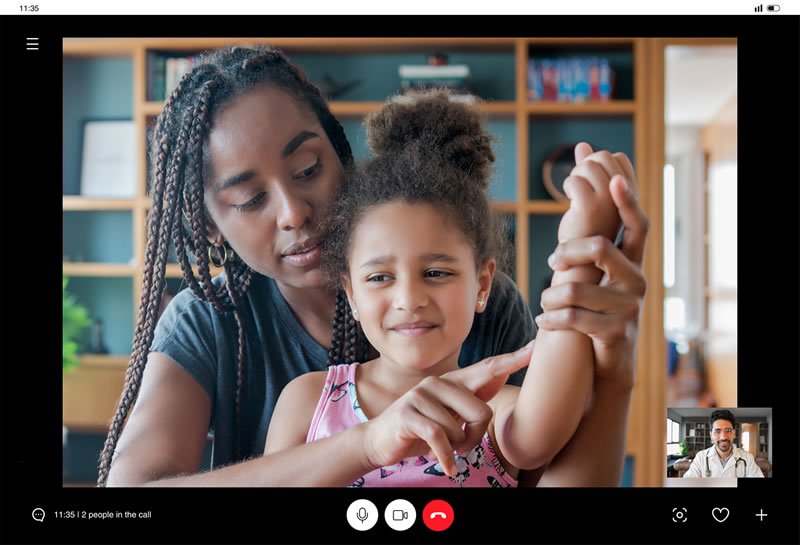
8 Essential Features for Telemedicine Platforms
July 26, 2021
Can Telemedicine Increase Your Practice’s Profitability?
August 18, 2021- Many healthcare providers quickly deployed video consultations in response to the COVID-19 pandemic.
- With the use of virtual healthcare set to expand beyond the pandemic, careful planning is needed to ensure systems are efficient and integrated into current workflows.
- This article considers how to make the best use of telemedicine, whether you are using telemedicine for the first time, or looking to improve your practice.
What is telemedicine?
Telemedicine is the provision of remote clinical services using electronic audio and visual means.
Interactive real-time services, such as video consultations or live messaging, are probably the most familiar but telemedicine also includes remote monitoring of patients using tech devices and storage and forwarding of clinical images and data.

What is the value of an effective telemedicine practice?
Telemedicine can be most effectively used in a hybrid practice, with both face-to-face appointments and virtual visits. When properly integrated into existing workflows, telemedicine offers many advantages, such as:
- Improved access and convenience for patients
- Enables access beyond normal clinic hours
- Increased quality and continuity of care
- Improved engagement with patients
- Better monitoring and management for chronic diseases
- Improved follow-up and patient compliance
- Triage to determine whether an in-person visit is required
- More efficient use of clinician’s time
- Reduced no-shows or late cancellations
- Ability to see more patients
- Increased patient satisfaction
- Reduced spread of infectious diseases
How to start a telemedicine practice
Before deciding on the best solution for your practice, some research will help determine to what extent your organisation is ready for integrating telemedicine and what additional resources may be required.

Preparation stage (1-7)
1. Identify the need
Make an assessment of your clinic’s or hospital’s practice and workflows with feedback from frontline staff to identify issues such as:
- Missed appointments or late cancellations
- Barriers to in-person visits
- Inefficient use of time, clinic or staff resources
- Areas where patient compliance could be improved
- Disruption in continuity of care
- Staff shortages
- Revenue loss
Determine which issues can most likely be addressed by utilising telemedicine.
2. Decide on the scope of your telemedicine services
Telemedicine is most effective when used strategically, in combination with traditional methods of healthcare delivery. Both staff and patients will benefit from a phased introduction, with ongoing evaluation, rather than rushing to implement virtual care for all patients at once.
Consider which services best match certain telehealth technologies, and for which patient groups.
3. Legal and regulatory considerations
Before deciding on a telemedicine solution, it is vital to consider the relevant laws and regulations for your country/state and type of practice, including:
- Licensing laws for practicing telemedicine
- Data protection and security regulations (such as HIPAA and GDPR)
- Malpractice insurance cover for telemedicine
- How to obtain informed patient consent
- Reimbursement – whether insurance or direct payment
- E-prescribing regulations
This will involve liaising with your legal and billing team, and malpractice insurance carrier.
4. Evaluate technology required
Consider what hardware and software is required to upgrade your current technological capacity. If an externally provided solution is preferred, evaluating platform and vendors by asking for a demonstration or trial.
5. Plan your business case
Starting a telemedicine practice requires an initial financial investment. You will need to create a realistic business plan by factoring in all expenses, and likely return on investment over the short and long-term.
This will involve assessing the availability and level of insurance reimbursement. For direct payments, determine optimal pricing by analyzing your key competitors’ offerings.
6. Design your workflow
Plan your workflows and procedures to balance in-clinic and telemedicine appointments and provide an optimal experience for both patients and staff.
Points to consider:
- How to set clear patient and provider expectations on the use of telemedicine
- How to ensure telemedicine is used for clinically relevant purposes and adheres to legal and regulatory requirements
- Which time of day is preferred to schedule telemedicine appointments
- What role each member of staff will play
To streamline telemedicine consultations, you will need to set up:
- Your physical workspace, whether in clinic or at home
- Appointment scheduling procedure
- Automated appointment reminders
- Online messaging feature
- Document uploading, storage and sharing
- Interfacing with electronic health records (EHR)
- Integration of health monitoring devices
- Virtual waiting room with patient check-in and verification
- Online consent process
- Invoicing and reimbursement
- E-prescribing
If using an externally developed telemedicine platform, look for one that has these features built into the platform.
7. Prepare your care team
Successful implementation of telehealth is a team effort. Provide adequate training and ongoing support to frontline staff. Trained staff can then assist patients in setting up their accounts, scheduling appointments, and managing any issues that arise.

Implementation Stage (8-12)
8. Small scale trial and evaluation
Before a full roll-out of telemedicine services, test it out with a few patients who are already comfortable with video consultations. Collect feedback form both patients and staff and iron out any initial problems.
9. Patient awareness and education
Communicate telehealth options to your patients. Update your website to prominently feature your new telemedicine booking options. Market your new telemedicine services through your website, social media, email marketing, and clinic signage.
Provide education on how to use the new services through on-line videos or in-person demonstrations.
10. Roll-out
Begin telemedicine for selected groups of patients and services which you identified in the planning stage.
11. Observe and evaluate
Observe and monitor the impact of your programme. Collect feedback from staff and patients, as well tracking key success metrics. Troubleshoot any issues that arise and adjust your workflows as necessary.
12. Scale-up
Once you are confident that your telemedicine services are working efficiently and integrating well into your practice, consider scaling up to other groups.
Reference:
AMA® Telehealth Implementation Playbook | AMA
For the ideal telemedicine solution with optimised workflows, Medoment seamlessly integrates online consultation booking and management, video consultations, and a total patient engagement portal within a single platform.
RECENT POSTS
- 7 Benefits of Medoment RPM for Your Practice
- Remote Patient Monitoring for Chronic Disease Management
- Can telemedicine help reduce the impact of cardiovascular diseases?
- Can telemedicine be used during pregnancy?
- Can Telemedicine Improve Diabetes Management?
- How to conduct a physical exam via telemedicine
- How can MEDOMENT Optimise Patient Engagement?
- Can patient engagement portals improve healthcare?
- How to choose the right telemedicine software partner
- How to invest in telemedicine software

